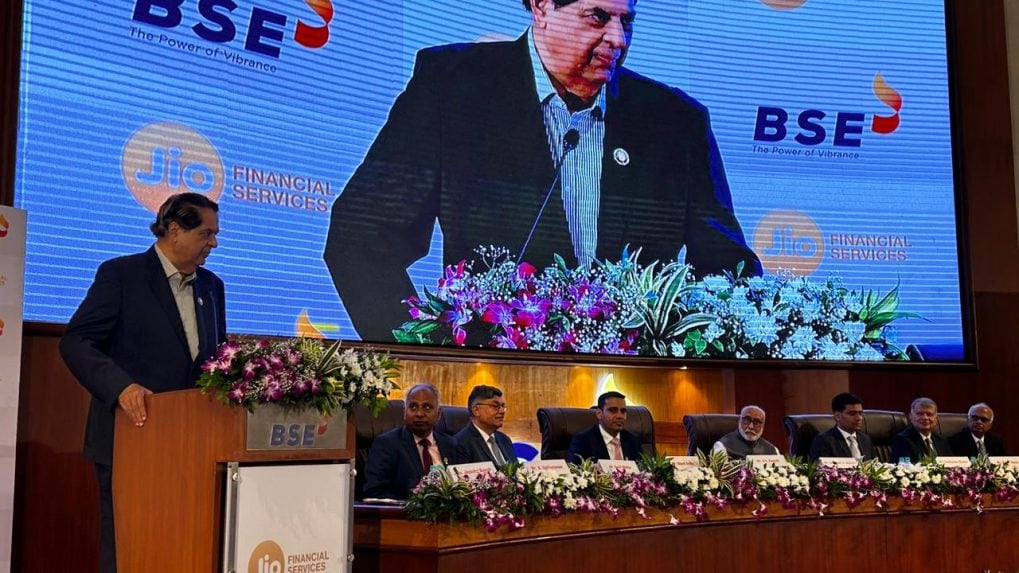Jio Financial Services Shares Hit Lower Circuit on Listing Day
In the ever-changing landscape of the stock market, unexpected twists and turns can greatly influence investor sentiments. The recent listing of Jio Financial Services Ltd (JFSL) has caught the attention of both seasoned traders and newcomers to the market. The company's shares took a surprising turn as they hit the lower circuit just minutes after making their debut on the stock exchanges. This development raises questions about the factors contributing to this unexpected performance and the implications it holds for the financial market.
A Muted Debut and Initial Performance
The curtains lifted on JFSL's trading journey with the company's shares being introduced at Rs 265 on the Bombay Stock Exchange (BSE) and Rs 262 on the National Stock Exchange (NSE). However, the jubilation of the listing was short-lived as the stock plummeted to Rs 251.75 on the BSE and Rs 248.90 on the NSE, marking a 5% decline from its initial listing price. This rapid decrease activated the lower circuit mechanism, a safeguard against excessive price drops within a single trading day.
Understanding the Lower Circuit Mechanism
The lower circuit is a safeguard mechanism designed to prevent stocks from experiencing precipitous drops beyond a predetermined percentage in a single trading day. In the case of JFSL, the lower circuit is set at 5%. This regulatory measure is aimed at stabilizing the market and curbing extreme price fluctuations that can lead to panic selling and volatility.

Unanticipated Factors Impacting the Debut
The muted debut of JFSL has stirred a wave of surprise and curiosity among market observers. The grey market, a domain often relied upon for early insights, had anticipated a listing price around Rs 335. Several factors could have contributed to this unexpected debut:
1. Recent Market Sell-off
The Indian stock market has recently experienced a sell-off, causing fluctuations across various sectors. The timing of JFSL's listing could have been affected by this broader market trend.
2. Newness of the Company
As a relatively new entrant to the market, JFSL might have prompted investors to adopt a wait-and-see approach. They may prefer to assess the company's long-term performance before committing significant resources.
3. Sectoral Concerns
JFSL's focus on financial services might have raised concerns among investors due to the inherent risks associated with this sector. The volatile nature of financial markets and the potential impact of economic shifts could have contributed to this hesitation.
JFSL's Strengths and Prospects
Despite the subdued debut, JFSL holds a notable position as the second-largest non-banking financial company (NBFC) in India, boasting a market capitalization exceeding Rs 1.6 lakh crore. With a strong track record of growth and alignment with India's economic trajectory, the company remains poised to harness the growth opportunities presented by the nation's expanding economy.
A Positive Outlook Amidst Challenges
The journey ahead for JFSL remains uncertain, as its ability to recover from the initial setback is still in question. However, the company's long-term potential and growth prospects are undeniably positive. Investors are encouraged to closely monitor the company's progress and performance in the coming days, keeping an eye on its ability to weather the initial storm and regain its foothold in the market.
Key Details of the Listing
Here are some additional details about JFSL's recent listing:
- JFSL successfully raised Rs 15,500 crore through its well-subscribed initial public offering (IPO).
- The IPO received a staggering subscription rate of 111 times, indicating strong investor interest.
- Renowned entities like BlackRock, Fidelity, and SBI Mutual Fund were among the anchor investors for the IPO.
Unveiling Jio Financial Services
Jio Financial Services is a digital-oriented financial services company specializing in a comprehensive range of products and solutions. These offerings encompass digital payment services, loans, insurance, and more. The company's inception dates back to 2016, and it operates as a subsidiary of Reliance Industries Ltd, a prominent conglomerate.
Conclusion
JFSL's listing journey has unveiled a series of unexpected events and outcomes. While its lower circuit-triggered debut may have raised eyebrows, the company's underlying strengths, successful IPO, and potential for future growth remain intact. As the Indian financial landscape continues to evolve, JFSL's trajectory will undoubtedly be closely followed by investors and market enthusiasts alike.
Frequently Asked Questions
-
What is a lower circuit in stock trading? A lower circuit is a protective mechanism that prevents a stock's price from plummeting beyond a certain percentage within a single trading day, curbing extreme price fluctuations.
-
Why did JFSL's shares hit the lower circuit on listing day? Several factors, including recent market sell-offs, the company's newness, and sectoral concerns, may have contributed to the unexpected debut performance.
-
What makes JFSL significant in the financial market? Despite the weak debut, JFSL holds the position of the second-largest non-banking financial company (NBFC) in India, boasting a substantial market capitalization.
-
Why are investors concerned about financial services companies like JFSL? Investors might be concerned about the inherent risks associated with the financial sector, which can experience volatility due to economic shifts.
-
What are the key details of JFSL's listing? JFSL successfully raised Rs 15,500 crore through its IPO, achieving a remarkable subscription rate of 111 times, with anchor investors including BlackRock, Fidelity, and SBI Mutual Fund.
.png)
.png)
